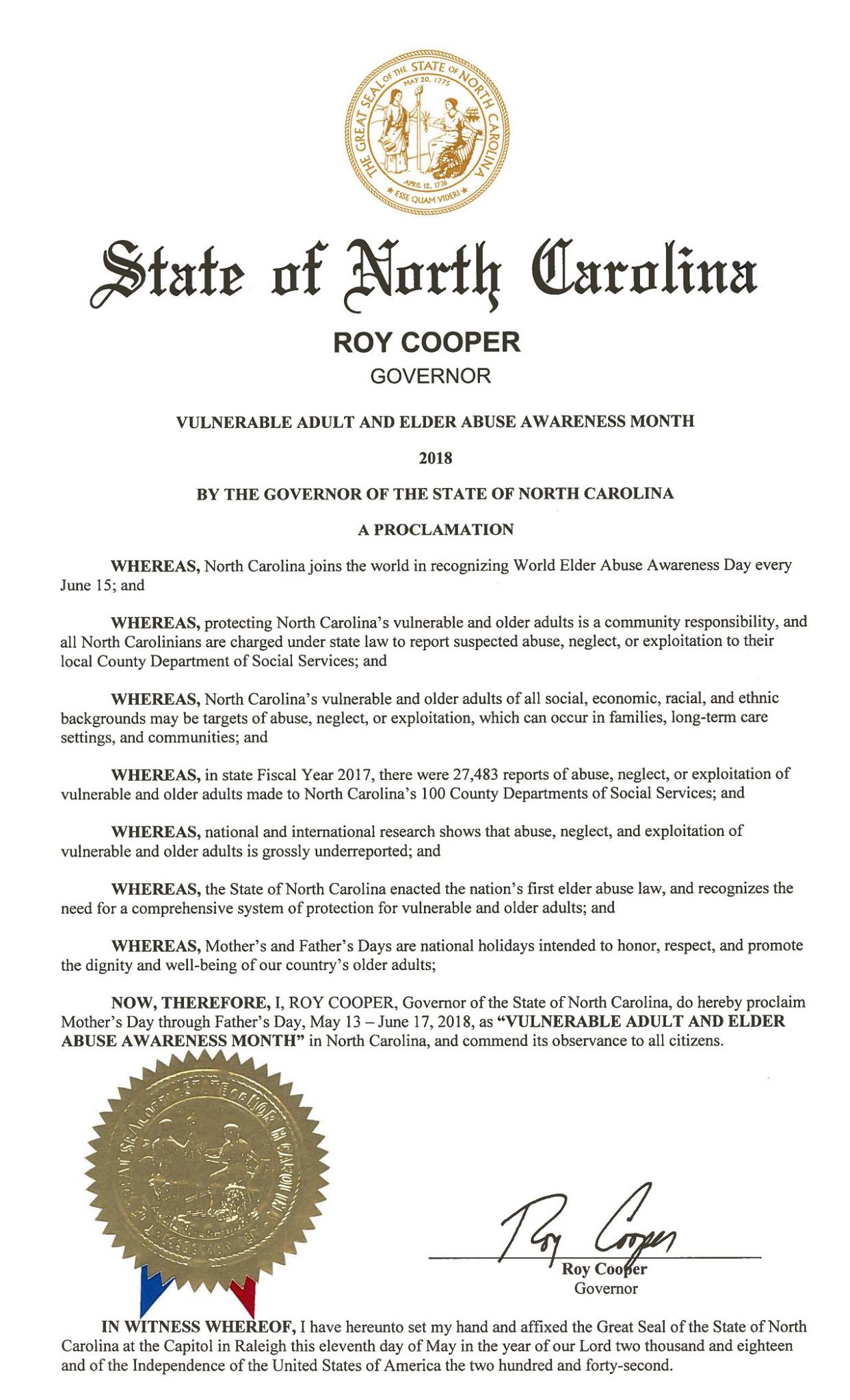1 in 14: The startling truth about elder abuse


With the advent of the #MeToo movement and other social justice causes that seem to be bubbling up, it is time we start focusing on one of our most vulnerable populations, the "older adults."
Our grandmas, grandpas, and parents, the ones who built this country are abused at a startling rate. North Carolina Governor Roy Cooper signed a proclamation this month making Mother's Day through Father's Day "Vulnerable Adult and Elder Abuse Awareness Month." According to the state proclamation in FY2017, there were 27,483 reports of abuse, neglect, or exploitation of vulnerable and older adults in North Carolina. What the proclamation does not report is that only 1 in 14 cases of abuse are reported to authorities (National Reach Council, 2013).
Nicole is an ABC11 Influencer. Read more about the program here.
Abuse in older adults generally falls in one or more of four categories. Signs of possible abuse include:
1. Physical abuse, neglect, or mistreatment (inflicting physical pain or injury on an older adult). This form is something we are most commonly aware of and it typically presents in the older adult as bruising, broken bones, burns, etc. to the body.
2. Emotional abuse (verbal threats, intimidation, harassment, and belittling comments). Sudden isolation or withdrawal from activities that they typically enjoyed, sudden depressive-like symptoms, frequent arguments between caregiver and care receiver can be signs that there is ongoing emotional abuse.
3. Financial Abuse (misuse or withholding funds). Sudden changes in ability to pay for things, whereby they were able to pay for groceries and house maintenance, etc. and now they are no longer able to do so.
4. Neglect (not attending to the physical needs of the elder). Signs of neglect generally build slowly over time and can include poor personal hygiene, bed sores, and/or unexpected weight loss.
A common stereotype is that the prevailing amount of abuse to older adults occurs under the care of nursing homes and other long-term care facilities. The reality is that 60% of elder abuse and neglect occurs at the hands of family members (Lachs, M., & Pillemer, K. 2015). It is important to note that many chronic conditions older adults are faced with can make identifying abuse difficult as many different cognitive disorders can muddy the waters between who they were and who they are now.
Elder abuse can be prevented with public education and awareness, as well as caregiver awareness of personal burnout. Warning signs of caregiver stress include irritability, anxiety, depression, feeling run down, frequent overreactions, feeling resentful, weight gain/loss, and cutting back on what fuels you (such as leisure activities).
If you have a concern that an older adult or an adult with disabilities is being exploited, abused, or neglected, contact your local Department of Social Services. If you are concerned about an older adult who is living in a long-term care community, contact the Long Term Care Ombudsman.
If you find yourself needing to have this type of conversation with a loved one, join our online community of caregivers to continue this conversation. We have more than 300 family caregivers supporting each other and sharing resources.









